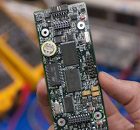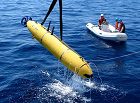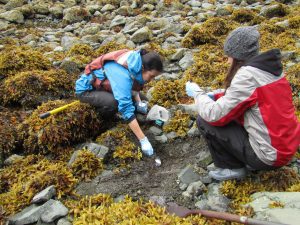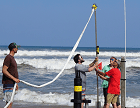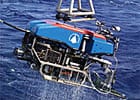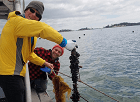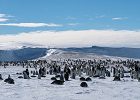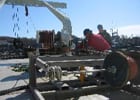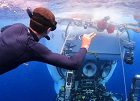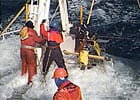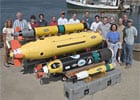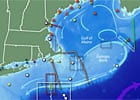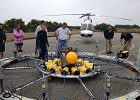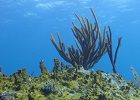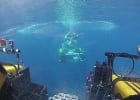Labs & Groups
Acoustic Communications Group
Acoustic communications and navigation systems provide telemetry, control, and positioning for undersea instrumentation and vehicles. The Acoustic Communications Group has been developing and performing research in this area for decades. The group's work focuses on developing new methods and improving existing systems for underwater acoustic communication, particularly underwater modems.
Advanced Engineering Laboratory
The Advanced Engineering Laboratory is made up of engineers and technical support personnel who work with scientists to develop oceanographic instrumentation. Instruments such as buoys to measure meteorological data, sensors for underwater navigation, and whale tagging devices are designed at AEL.
Chemical Sensors Lab (CSL)
The goal of the Chemical Sensors Lab is to advance our understanding of ocean chemistry and its role in an age when human activity is significantly impacting climate. This interdisciplinary lab develops new sensors and sensing platforms to study ocean chemistry and measure microplastics in the ocean.
Coastal and Ocean Fluid Dynamics Laboratory (COFDL)
The Coastal and Ocean Fluid Dynamics Laboratory focuses on oceanic processes affecting circulation and transport of sediment, the exchange of heat and momentum across the air-water interface, and dispersal of organisms within ocean layers.
Deep Submergence Laboratory (DSL)
The Deep Submergence Laboratory develops systems for remote, unmanned exploration of the ocean depths. DSL is home to remotely operated vehicles and hybrids such as Nereid Under Ice and Mesobot as well as autonomous vehicles like SeaBed and Polar Sentinel.
Lindell Aquaculture Lab: Farming the Seas Intelligently
The Lindell Lab works in the technology, genomics, and policy realms to advance the feasibility, economics and acceptance of aquaculture.
Marine Animal Remote Sensing Laboratory (MARS)
The Marine Animal Remote Sensing Laboratory uses remote sensing methods such as photography, satellites, radar, passive acoustic monitoring and robotics to study ecosystem health as well as behavior and ecology of top predators.
Mooring Operations & Engineering (MOE)
The Mooring Operations & Engineering (MOE) group provides a full range of mooring services from design and fabrication through deployment and recovery. Collectively, this team brings more than 100 years of experience to the worldwide oceanographic community.
National Deep Submergence Facility (NDSF)
The National Deep Submergence Facility is home to HOV Alvin, ROV Jason/Medea, and AUV Sentry. Each vehicle offers unique tools to explore the mysteries beneath the ocean’s surface.
Ocean Acoustics & Signals Laboratory (OASL)
Research concentrates on the use of acoustics to measure ocean properties, temperature, and to detect biological and geological objects in the ocean. Ocean acoustic tomography, shallow water acoustic propagation, and acoustic scattering in the ocean from zooplankton are studied.
Oceanographic Systems Lab (OSL)
The Oceanographic Systems Laboratory is made up of several engineers who work with scientists to develop complex ocean systems. Ocean monitoring devices such as the Remote Environmental Monitoring UnitS (REMUS) and the Towed Oceanographic Survey System (TOSS) were developed by OSL personnel.
Ocean Observatory Initiative (OOI)
The Ocean Observatories Initiative (OOI) is an advanced system of integrated, scientific platforms and sensors that measure physical, chemical, geological, and biological properties and processes from the seafloor to the sea surface in key coastal and open-ocean sites of the Atlantic and Pacific. The facility was designed to address critical questions about the Earth-ocean system, including climate change, ecosystem variability, ocean acidification, plate-scale seismicity, submarine volcanoes, and carbon cycling with the goal of better understanding the ocean and our planet.
PV Lab
Most people live within 100 miles of a constantly changing shoreline as wind, waves, and currents move sand along and across the beach. The PV Lab obtains field observations in harsh surfzone environments in order to understand and model waves, currents, and sand movement. This data can be used to predict wave height and direction along the coastline, current strength and direction, and beach erosion and accretion.
Reef Solutions Initiative
The Reef Solutions Initiative is a group of scientists and engineers focused on finding solutions to the coral reef crisis. The group turns transformative science and innovative technology into solutions designed to save reefs. The research approach is to integrate knowledge, expertise, and methods across disciplines to develop and apply novel technologies and experimental frameworks to enable solutions that will help save coral reefs and the coastal communities that reefs protect and support.
WARPLab
Marine robots live in a communication starved environment where autonomy is an absolute requirement for deployment. WHOI's Autonomous Robotics and Perception Laboratory (WARPLab) is interested in algorithmic and machine learning challenges for autonomous exploration robots so that they can perceive and understand their surroundings in order to plan their mission.

